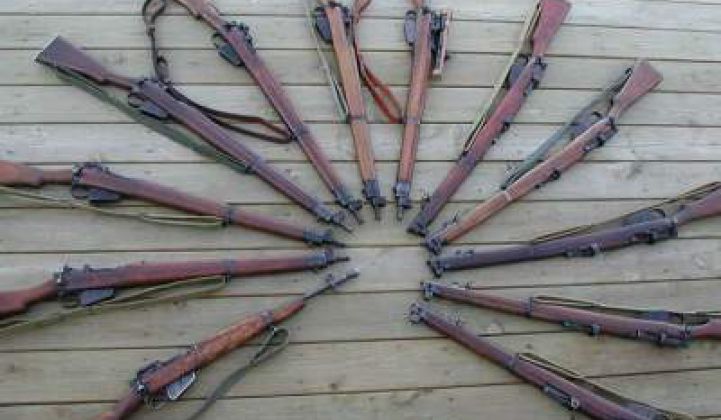Last week, I received a phone call from a woman. Let’s call her Julie Marino*. She sounded, to put it in a word, perturbed. Julie represented a small Bay Area-based OEM firm named Quick-Fire Manufacturing*. Quick-Fire’s primary line of business is the production of solar chargers for consumer devices such as mobile phones and iPads, which were then sold by its customer on platforms such as Amazon.com at the rate of around 200 a month. All the components that went into the charger, explained Julie, were U.S.-manufactured, except one: the solar cells themselves. Quick-Fire imported 18-percent-efficient monocrystalline cells that were 125mm long and 5mm wide from a China-based supplier that it had found online. Standard mono c-Si cells are 125x125mm or 156x156mm, so the supplier was required to perform an extra cutting step to get them to the required dimensions.
By now, an informed reader should be able to guess the nature of Quick-Fire’s quandary: they had been caught completely unawares by the Department of Commerce’s preliminary ruling on May 17 to impose anti-dumping tariffs against crystalline silicon cells manufactured in China. The tariffs amounted to 31 percent for companies that submitted documentation to the DOC, and 250 percent for everyone else. Quick-Fire’s supplier was in the latter group. This created a two-fold problem for the company: one, it had to pay customs duties on cells that had already been shipped to the U.S. during the three months prior to the May 17 ruling due to a finding of “critical circumstances” by the DOC -- essentially, that shipments of cells and modules from China had increased significantly in the days leading up to the ruling (I suspect, though, that this had more to do much with 1603 safe-harboring than Chinese suppliers trying to dodge the tariff). This amounted to paying duties of $7,500 on shipments worth only $3,000 -- which pushed the cost of the product well above its retail price.
But the trouble didn’t end there. Quick-Fire’s second problem was that it had no alternative cell supplier. Given the prohibitive cost of the tariff, it made no sense to continue procuring goods from its existing cell supplier. The same applied to any other China-based cell manufacturer that was willing to sell Quick-Fire cells in the relatively miniscule volumes that it required -- invariably, it was part of the group that was levied with a 250 percent duty. Given the circumstances, Julie said, Quick-Fire would much rather procure its cells from the U.S. going forward, but the problem was that none of the few remaining U.S.-based cell suppliers that Julie had spoken with were willing to do business in such small volumes, or perform the extra cutting step. Since then, production at Quick-Fire had been at a standstill, and employees were being sent home day after day. What could they do?
I had three suggestions for Julie. One was to look into smaller U.S.-based cell suppliers, some of which she might not have heard of. It was likely, though, that they would encounter the same volume problem as before, because even the smallest commercial cell producer in the U.S. that I knew of -- Pennsylvania-based Solar Power Industries -- had a capacity of 25 megawatts. Secondly, Quick-Fire could use thin-film cells (amorphous silicon) from its existing supplier, or others like them. This was because thin-film cells made in China did not fall under the tariff. The catch, however, is that their efficiency is a lot lower (6 percent to 8 percent) and it would likely require a redesign of the product. Thirdly, the company could ape the strategy of the large China-based module suppliers that were trying to skirt the tariff: they could find a Taiwan-based cell supplier of a similar scale and profile as their existing Chinese vendor using the same channels as before. This option, I believed, held the most probability of success.
I don’t fault CASM or SolarWorld for filing the initial complaint that led to the tariffs being enacted; that’s their right. (I do, however, question the validity of the methodology employed by the DOC to arrive at their ruling, specifically their classification of China as a “non-market economy,” which led them to use Thailand as a “proxy economy” to calculate the “fair value” of a China-made module -- a methodology also challenged by the Cato Institute -- but that’s another story.)
But I have been skeptical from the outset that it will result in any real benefit for domestic module manufacturers. As we’ve mentioned before, Chinese module suppliers can avoid the tariff by sourcing cells from Taiwan at an estimated additional cost of only 6 cents to 8 cents per watt, and still price their product comfortably below that of domestic competitors. Indeed, multiple sources have confirmed that Chinese module prices in the U.S. have continued to trend downward even after the tariff ruling (we’ll be covering the impact of the tariff on costs and pricing in more detail in an upcoming article). In the case of Julie and her employees, the impact has been much worse than neutral, a perfect example of how trade restrictions can have unintended and seriously deleterious consequences for some of the very firms they are meant to protect.
For some reason, however, I doubt that Quick-Fire will appreciate the rich irony of the situation.
***
*Names have been changed to protect privacy.



